Tension Pavilion
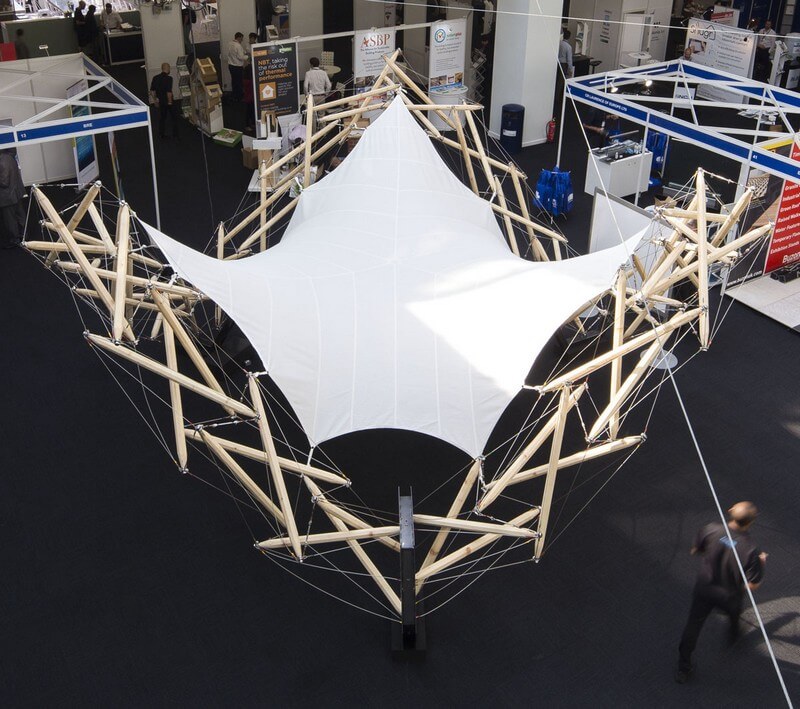
Tension by StructureMode is a lightweight pavilion with a tensegrity ring and a tensile fabric membrane. Tensegrity is a structural system that was developed by Kenneth Snelson and Buckminster Fuller in the 1960’s. It is characterised by compression elements that do not touch, but are suspended in a ‘sea’ of tension cables, as well as being a self-stable system that does not rely on external structures for its stability, such as compression rings or guy ropes.
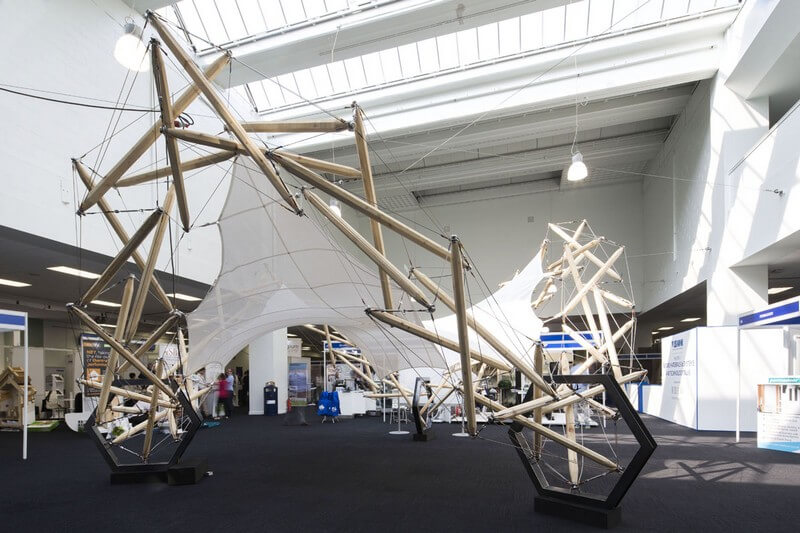 Pioneering research into the system by Fuller and Snelson led to a series of sculptural experiments, but pure tensegrity has rarely been utilised for a building structure. The sinuous geometry used for Tension provides a minimal base on three points, formed of three arches and three valleys to support an anticlastic fabric surface.
Pioneering research into the system by Fuller and Snelson led to a series of sculptural experiments, but pure tensegrity has rarely been utilised for a building structure. The sinuous geometry used for Tension provides a minimal base on three points, formed of three arches and three valleys to support an anticlastic fabric surface.
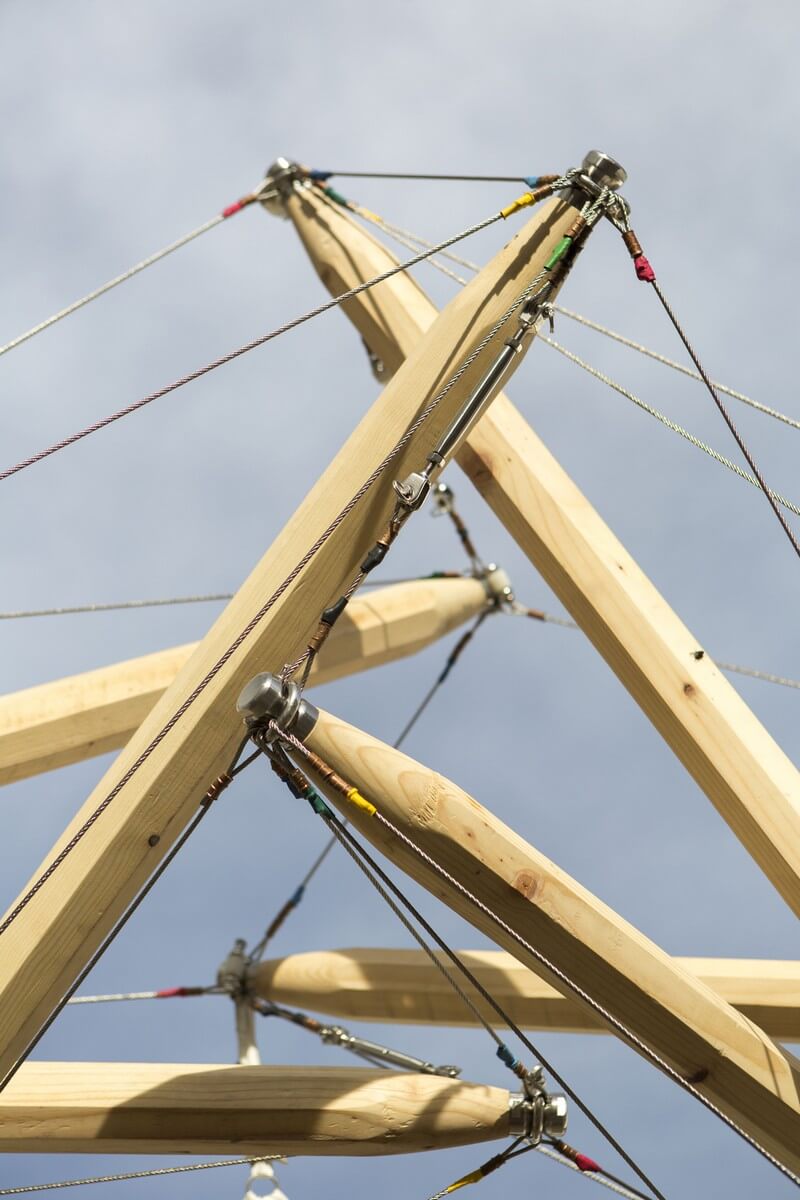 There are 24 tensegrity modules that together form a torus, each having varying geometry to generate the smooth curvature. All coordinates were generated using Grasshopper, parametric modelling software, and the pavilion was analysed using Oasys GSA.
There are 24 tensegrity modules that together form a torus, each having varying geometry to generate the smooth curvature. All coordinates were generated using Grasshopper, parametric modelling software, and the pavilion was analysed using Oasys GSA.
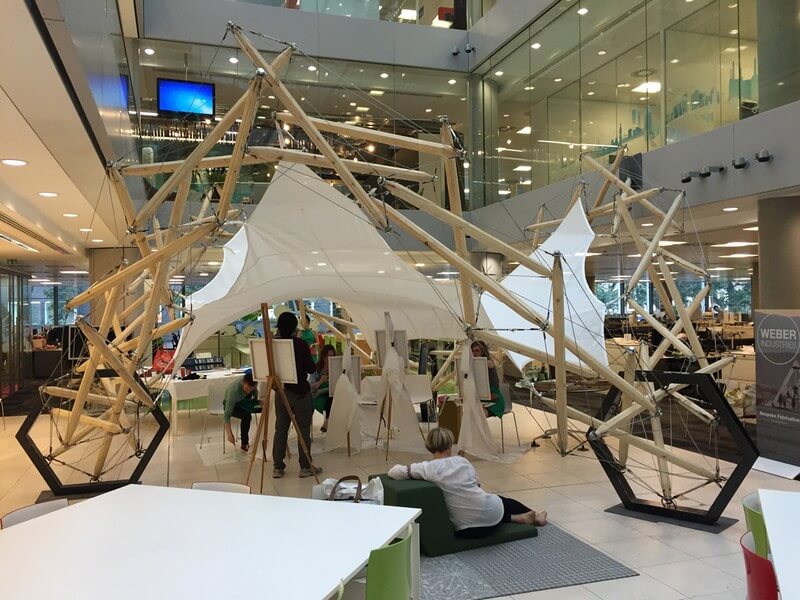 StructureMode undertook meticulous form-finding to derive a stable tensegrity geometry, rigorous non-linear analysis to optimise the size of all elements and physical testing to prove the system was accurately modeled.
StructureMode undertook meticulous form-finding to derive a stable tensegrity geometry, rigorous non-linear analysis to optimise the size of all elements and physical testing to prove the system was accurately modeled.
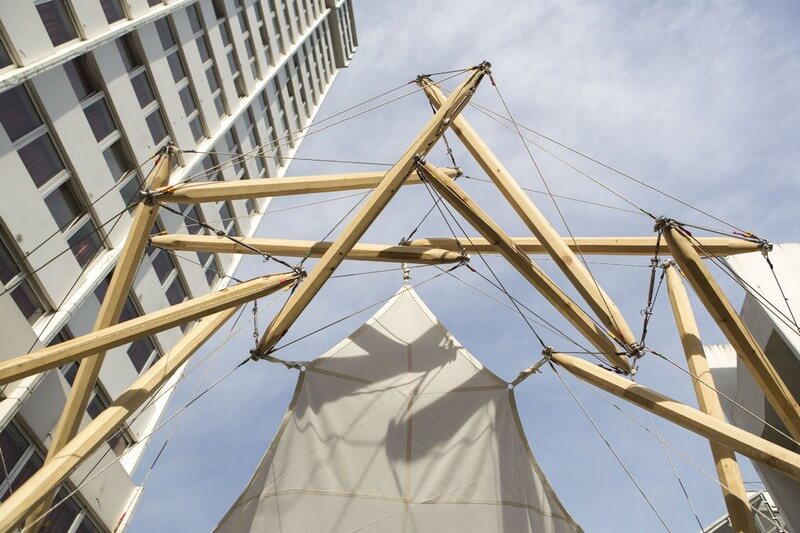 StructureMode, Weber Industries and Base Structures worked closely together to refine the connections to maintain legibility of the structure while keeping it simple to fabricate and easy to erect.
StructureMode, Weber Industries and Base Structures worked closely together to refine the connections to maintain legibility of the structure while keeping it simple to fabricate and easy to erect.
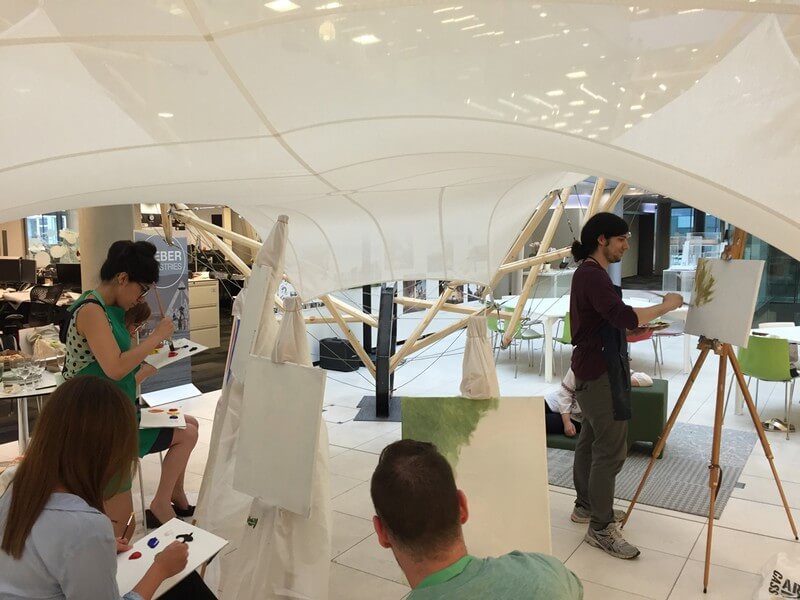
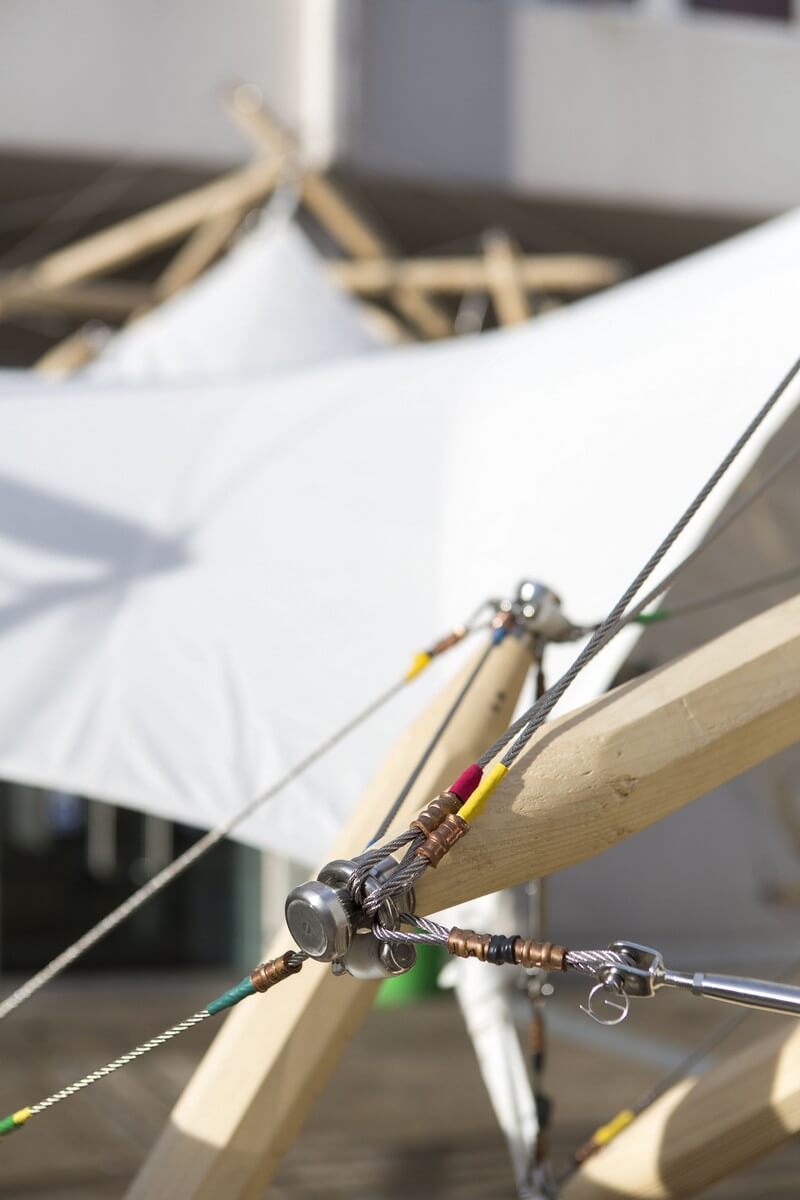
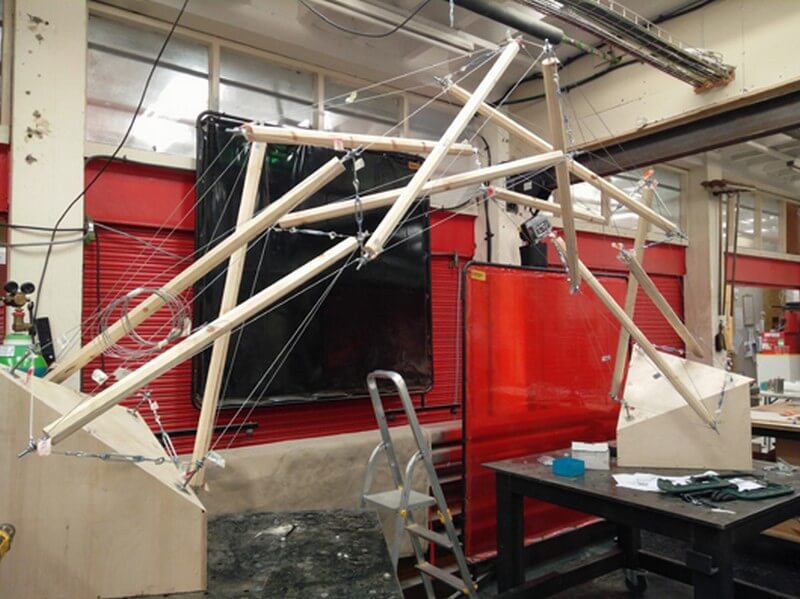
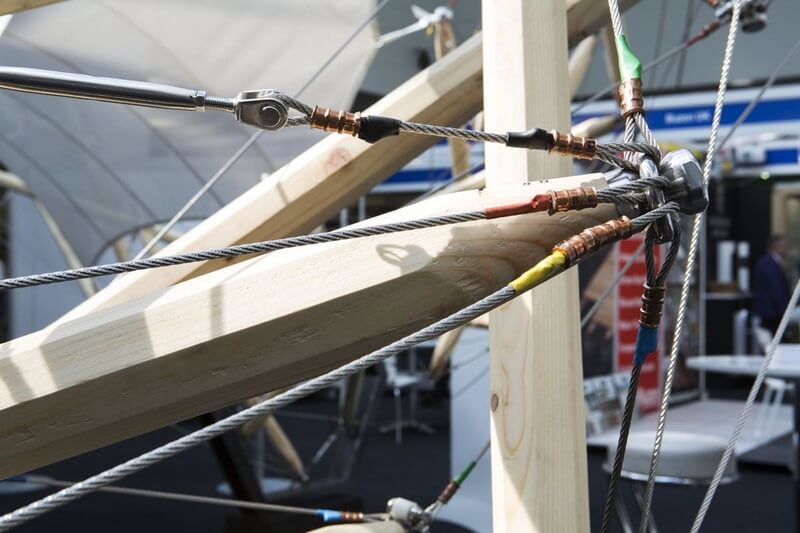
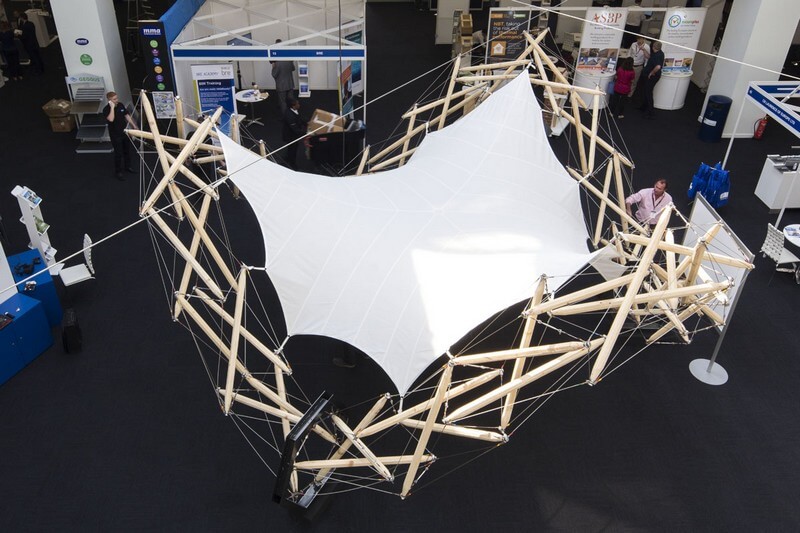




























Comments